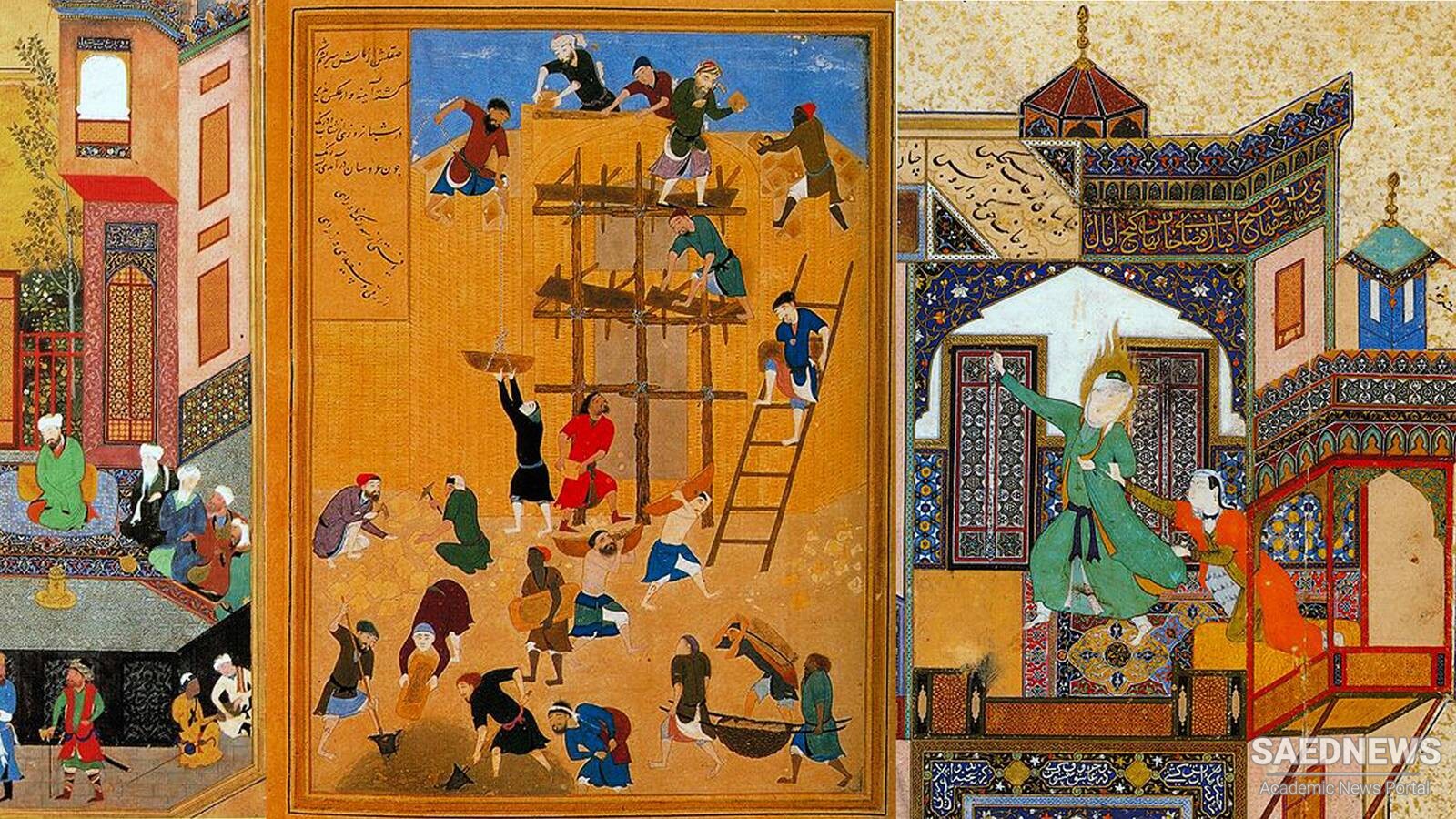Farisi was a pupil of the astronomer and mathematician Qutb al-Din al-Shirazi, who in turn was a pupil of Nasir al-Din Tusi. According to Encyclopædia Iranica, Kamal al-Din was the most prominent Persian author on optics. His work on optics was prompted by a question put to him concerning the refraction of light. Shirazi advised him to consult the Book of Optics of Ibn al-Haytham (Alhacen), and Farisi made such a deep study of this treatise that Shirazi suggested that he write what is essentially a revision of that major work, which came to be called the Tanqih. Qutb al-Din Al-Shirazi himself was writing a commentary on works of Avicenna at the time.
Farisi is known for giving the first mathematically satisfactory explanation of the rainbow, and an explication of the nature of colours that reformed the theory of Ibn al-Haytham Alhazen. Farisi also "proposed a model where the ray of light from the sun was refracted twice by a water droplet, one or more reflections occurring between the two refractions." He verified this through extensive experimentation using a transparent sphere filled with water and a camera obscura.
His research in this regard was based on theoretical investigations in dioptrics conducted on the so-called Burning Sphere (al-Kura al-muhriqa) in the tradition of Ibn Sahl (d. ca. 1000) and Ibn al-Haytham (d. ca. 1041) after him. As he noted in his Kitab Tanqih al-Manazir (The Revision of the Optics), Farisi used a large clear vessel of glass in the shape of a sphere, which was filled with water, in order to have an experimental large-scale model of a rain drop. He then placed this model within a camera obscura that has a controlled aperture for the introduction of light.
He projected light unto the sphere and ultimately deducted through several trials and detailed observations of reflections and refractions of light that the colors of the rainbow are phenomena of the decomposition of light. His research had resonances with the studies of his contemporary Theodoric of Freiberg (without any contacts between them; even though they both relied on Ibn al-Haytham's legacy), and later with the experiments of Descartes and Newton in dioptrics (for instance, Newton conducted a similar experiment at Trinity College, though using a prism rather than a sphere).
In his Kitab Tanqih al-Manazir (The Revision of the Optics), Farisi also saved the latest advancements in color theory by Nasir al-Din al-Tusi on color odering. In contrast to Aristotle (d. 322 BCE), who had suggested that all colors can be aligned on a single line from black to white, Ibn-Sina (d. 1037) had described that there were three paths from black to white, one path via grey, a second path via red and the third path via green. Al-Tusi (ca. 1258) elaborated on this by stating that there are no less than five of such paths, via lemon (yellow), blood (red), pistachio (green), indigo (blue) and grey. No less than 23 intermediate colors on these paths were explicitly mentioned in this text.
Fortunately this text was saved since Farisi included it in his Kitab Tanqih al-Manazir (The Revision of the Optics), which was copied numerous times until at least the nineteenth century as part of the textbook Revision of the Optics (Tanqih al-Manazir). Tusi's description of the relations between various colors effectively made color space two-dimensional. Robert Grosseteste (d. 1253) proposed an effectively three-dimensional model of color space.


 Mir Sayyid Ali Hamadani
Mir Sayyid Ali Hamadani














































